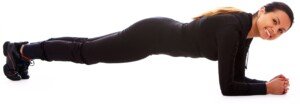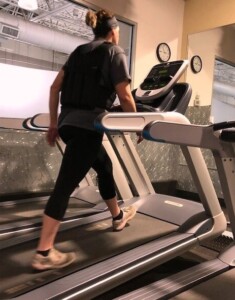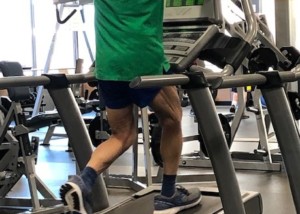
Here is the top 8 list for low back exercises for building your strongest core ever.
No matter what the fitness goal, one absolutely must include a strong low back component to the regimen for optimal core strength.
Here are eight great low back exercises, no particular order.
Deadlift. The straight leg deadlift, especially, will strengthen the low back. But find the version that works best for you.

Deadlift. Shutterstock/baranq
The entire posterior chain is engaged with this great compound movement, and the low back is the key area, as it helps unite the lower and the upper body to perform one fluid movement of pulling a weight off the floor.
Squat. In the squat, as in the deadlift, the erector spinae (lower back) muscles and other relevant structures integrate the lower body with the upper to bring together this movement.

Squat. Shutterstock/YanLev
Good form is vital. Start off with a very light bar to first master form.
Kettlebell swing. This is one of the premier low back exercises. The rep range should be 12-15 with great form for an emphasis on increasing strength.

KB swing at the start. Shutterstock/The Faces

KB swing at the top. Freepik pressfoto
A five or even eight RM, for instance, in this type of movement, is impractical and not particularly safe.
This is why the higher rep range for strength-increases is the exception here.
Make sure not to over-hinge, but also make sure you don’t make the movement too much like a squat, either. The weight should be taken only slightly through the legs.
Weighted plank. Have a partner place a plate on your middle back, heavy enough to make more than 30 seconds impossible, but more than 15 possible. If you don’t have a partner, you can place the plate.

This isn’t an endurance exercise; the short duration and high weight make it a strength training exercise; you want to strengthen the low back, not make it perform a marathon.
Standing overhead press. To push a free barbell overhead requires low back engagement. Do not hyperextend the back when pressing.

Overhead press. Shutterstoack/Comeback Images
Dumbbell pushup row. Do the pushup after every single row, not after both sides complete a row.

DB pushup row.
If done with strict form (body as straight as a plank of wood from head to toe), this movement will force low back action. This hits the core in a unique way.

High incline walking. Slowly walk on a treadmill at the highest incline without holding on. This will necessitate a slow pace.
The increased hip extension engages the low back. Holding onto the front bar or side rails will snuff out this effect. Incline walking hits the core.
Incline walking with weighted backpack will amplify the effect just described.
Biceps farmer walk. Here’s one you’ll rarely see because few people know how effective it is at targeting the daylights out of the lower back.
Even if you’re faithful to deadlifts and, say, the kettlebell swing, see what happens when you do this exercise! Dang, your “strong” low back will quickly begin fatiguing.
Hold a weight plate (25 to 35 pounds) with bent arms in front so that arms are at 90 degrees, plate(s) on top of forearms, and simply walk about the gym, focusing on good posture. See how your low back feels after just one minute.
By holding the weight in front of your trunk, you force the low back structures to isometrically contract to prevent the weight from pulling your trunk forward. For some people, just a 10 pound plate will be very taxing.
As simple and safe as this exercise is, it’s extremely effective and cannot be replaced with the deadlift, kettlebell swing or other classic low back movements.
A strong core is vital. Include most of these low back moves into your fitness regimen for your best core ever.


























